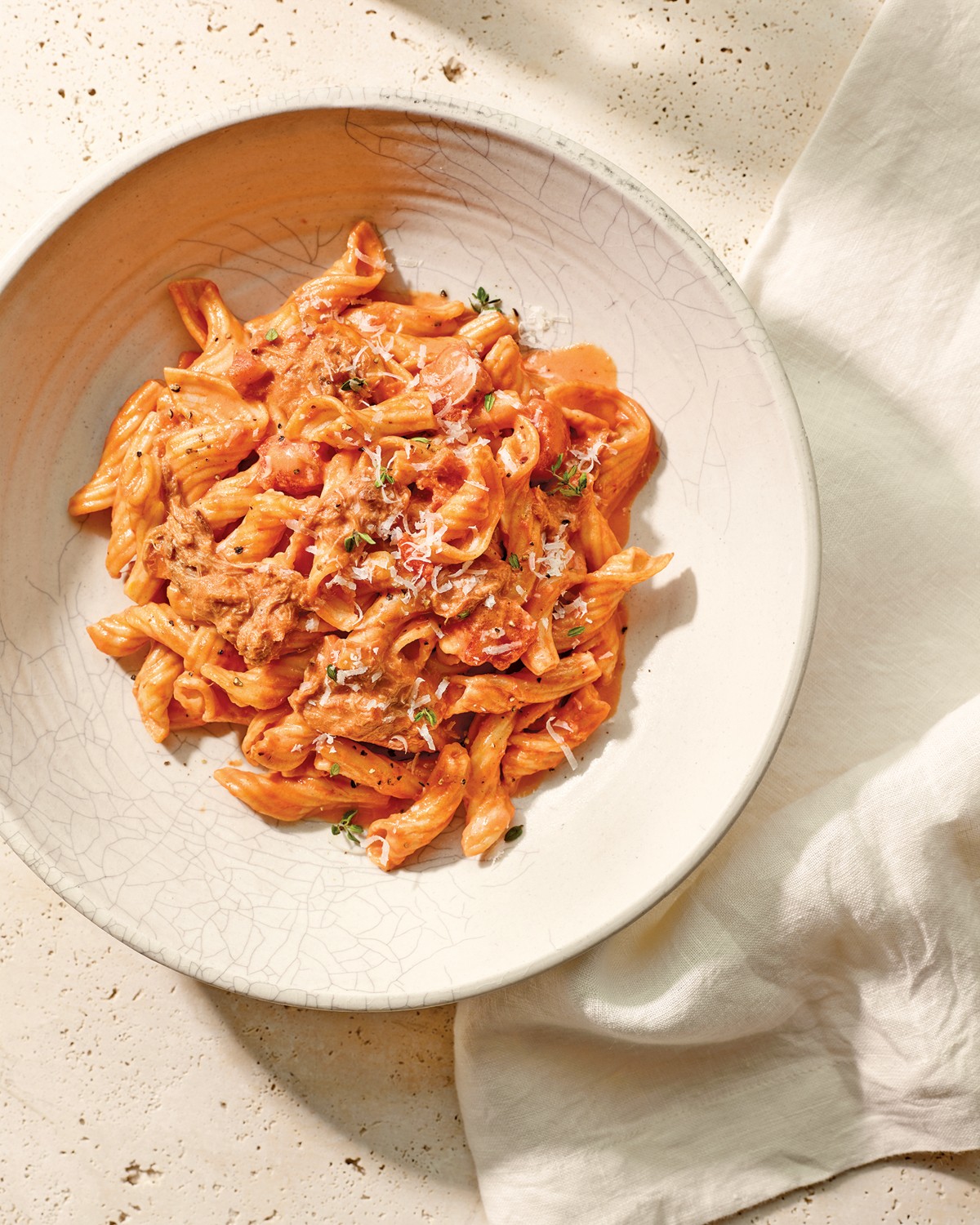With a name like Flour, it was clear from the start that Paul Minnillo's contemporary Italian restaurant in Moreland Hills would give pasta the respect it deserved. Since this popular eastside bistro opened its doors eight years ago, diners have come to discover and expect the plush joys of freshly made pasta in dishes such as tagliatelle Bolognese and rigatoni with lamb sugo.
In the early days, the kitchen crew cranked the noodles by hand using a small pasta maker. As time went on, the restaurant upgraded to a small tabletop extruder that greatly increased speed and consistency. Given the logistical realities of a cramped, hectic restaurant kitchen, Dennis Derganc, "the pasta guy," would work overnight to produce all the noodles. Soon, the idea to elevate the endeavor into a cottage business took root, and the high-quality pasta began making its way out of the dining room and to wholesale restaurant accounts.
Predictably, it wasn't long before they hit the wall.
"We were at capacity at the restaurant," explains chef-partner Matt Mytro. "We could not grow any bigger or take on new customers."
Recently, Mytro and co-owners Lisa and Paul Minnillo relocated Flour Pasta Company from the restaurant to a 2,300-square-foot production facility in Bedford Heights. Apart from the buildout, the largest investment came in the form of a high-end commercial pasta machine. If the name La Monferrina brings to mind sleek Italian roadsters, you're not that far off in terms of price.
The water-cooled, computer-controlled contraption ups production rates from 50 pounds of fresh pasta per hour to 300. A mixture of semolina flour, whole eggs, water and natural annatto coloring is kneaded and extruded through a variety of dies to create familiar and not-so-familiar pasta shapes like spaghetti, bucatini, rigatoni and cavatelli. Those bronze dies, each costing upwards of $1,000, is what separates the wheat from the chaff, asserts Mytro.
"Big commercial producers typically use Teflon-coated dies because they can run the machines faster and longer," he says, expounding on issues of pressure, friction and heat. "But nothing sticks to the pasta, which defeats the whole purpose."
Not surprisingly, Teflon leaves the surface of the noodle smooth, shiny and slick. The pasta that squiggles out of Flour's golden dies has a nubby texture that's ideal for grabbing and holding sauces. The fresh pasta is tossed with a little rice flour to prevent clumping, packaged, chilled and distributed to area retailers like Heinen's, Miles Market, Mustard Seed, Whole Foods and other shops.
"Now you have these opportunities to get into grocery stores, where everything is local and chef-driven," says Mytro. "Years ago you couldn't do that; nobody wanted fresh pasta."
Unlike dried pasta, Flour Pasta needs to be kept refrigerated, which makes it more of a specialty product. It also costs more than a budget box of dried noodles, but the payoff comes in the form of its bouncy, elegant structure, nutty flavor, and coarse sauce-philic exterior. Fresh pasta also saves you time in the kitchen, cooking in two to four minutes as opposed to 10 to 12.
"Fresh pasta is also much more forgiving," Mytro points out. "If you under-cook dried pasta, it sucks. If you over-cook dried pasta, it sucks. If you leave fresh pasta in the water for a couple extra minutes, it's still going to be fine."
The immediate goal is to increase the number of outlets where Flour Pasta is sold. Down the line, Mytro says they intend to add jarred pasta sauces to the lineup and maybe install a drying room so that they can offer shelf-stable dried noodles as well.
For Mytro, who doesn't like to sit still, this project helps to allay an overwhelming urge to expand the team's culinary portfolio.
"This was a kind of a compromise with Paul," Mytro confesses. "Going back six years ago, I've wanted to do another restaurant. For chefs, the goal is always to do another restaurant. But we could never find the right space or deal. Then this idea came up, which is more manageable at a time when it's hard to find staff at the restaurant."
Mytro rattles off a dozen or so restaurants that have opened up in Chagrin Falls, Beachwood and Orange Village over the past year alone, each taking a nibble at Flour's bottom line.
"I feel like the pasta can be a longer-lasting opportunity for when I get older," Mytro says half-jokingly.










